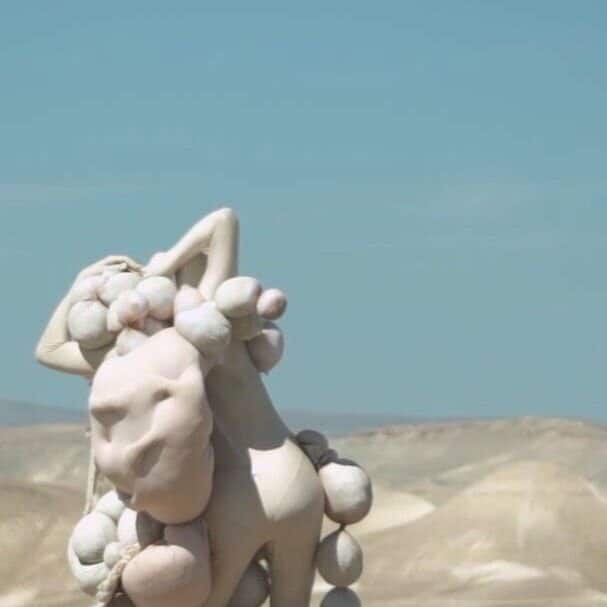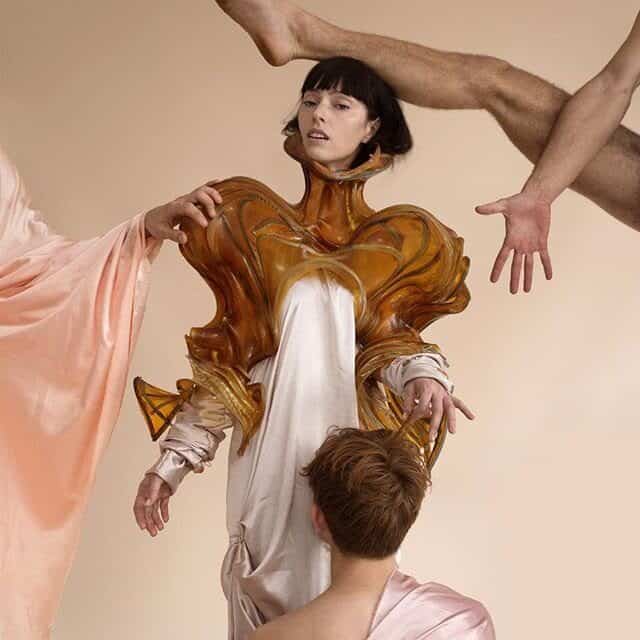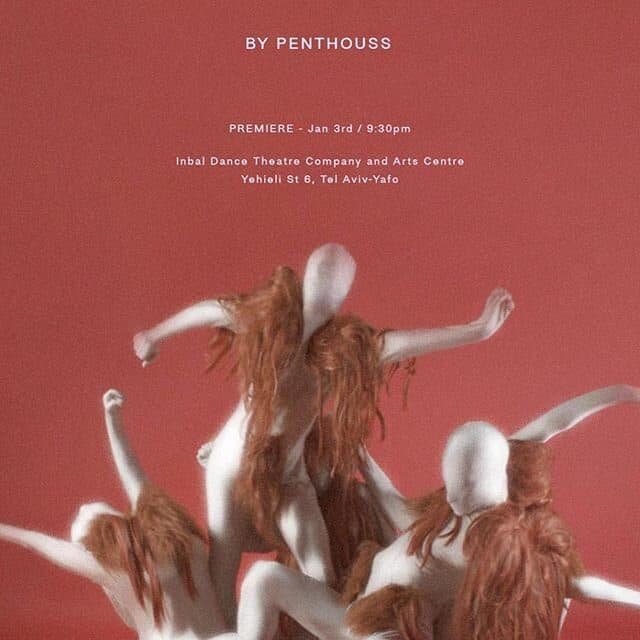On the morning of International Women’s Day, I sat down for my much anticipated interview with the UK-based multidisciplinary artist Anna Lann. I had encountered her work only a few weeks prior on Instagram. Her curated feed of modified naturalism caught my eye, provoking my own thought process as an artist. When I ventured onto her website, I was captivated by what I found: images accompanied by her own profound and angelic tones.
Lann takes on a variety of different mediums, such as performance art, dance, sculpture, video, and music. She has been showcased in museums, galleries, and concert halls around the world. Alongside co-collaborator Jonathan Trichter, she founded the interdisciplinary collective Penthouss. In our time together, we discussed her methods of collaboration, influences, and works through Lann’s distinctive ephemeral lens.
Where did your artistic impulse originate from? When do you remember first starting your work?
Well, I guess I can’t really point out a certain point when I started creating, because I think I’ve been creating and developing throughout my entire life, switching between mediums and developing, of course. But, I guess my first work would be in kindergarten, I remember it quite well. I had a performance- it was very contemporary. It sounds corny, but it’s just my image, genetic makeup.
Then that leads me into my next question: how does working collaboratively influence your work?
For me, working with other people, it’s like meeting another universe. So for example, I’m thinking of something or an idea and I have an image, and right then I always know that whoever I am with, the people that I trust are just trying to see from their side how they can best experience the idea that I’m trying to pitch to them. Sometimes when I explain this idea to them they will naturally think differently, envisioning a different image than the one that’s in my mind.

Photo: @annalannofficial
I’m really interested in how that allows me to see what I’m doing from another angle, from another sort of the rain. That’s where a lot of the fusion happens, because there are things that I cannot see. Of course, if I have an abstract idea, or even if it’s in a very developed point too, I will get in touch with the choreographer that I usually work with and I’ll tell her the idea and then she will go on her perspective, bring something to the table that I could not even think of. So, I really think it’s the best way to create interesting works.
When you’re creating a body of work, do you aspire to create a certain narrative? If so, what inspires your work, and motivates you to use collaborators and mediums to do so?
Well, I guess I can only say that I am very fascinated by science and nature. So my own narrative comes from science, philosophy, the things that I read or things that inspire me. For me, the idea and the narrative is usually very clear. But, I’m not really aiming for people to follow a narrative pinned down by a singular perspective. However, of course there is a narrative, and I know what that is. But, usually in the works they are not very tangible. So I really don’t expect people to follow them there. Maybe [my work] can inspire some people to see a different narrative or another, and that’s also fine by me.
What is your process as an interdisciplinary artist? Do you specialize in one thing, or is it in creating an intersectional journey where the mediums are tools to convey the message?
I am just not happy with making only music or only visuals. Making is just one direction, I guess it’s the connection between visuals, movement and sounds and how they work together in my mind. For me, that’s where the impact is, but at the same time it’s hard for me to separate the three. It’s funny, because a lot of art dealers or music labels constantly tried telling me that I should focus on one thing. But I refuse to focus on just one thing.

Image: @annalannofficial
By performing through all sorts of mediums I don’t feel that I have to be for example, a dance expert, because of course I’m not a dance expert. But I can work with dance. Also, I’m not the best sculptor in the world, but, if I have ideas, I can use different mediums and work with experts who can help me bring my ideas to fruition.
How do you forgo your projects, do you work one at a time or are multiple projects at a time influencing and flowing into one another?
It’s just a constant cycle and a constant flow. In this process one work can kind of inspire the next, and is it just like this constant flow where my next project is always rooted in the question: what if I took this farther? A lot of work is in the process of finishing projects. For example, there’s going to be an exhibition at a science gallery in Rotterdam starting in April. But at the same time I already have four to five works that are almost ready to launch. So I am always looking for galleries to show in. They’re all in the process of making some ready sooner than others, but I am always in a state of constant creation.
I don’t have the great privilege of finishing one thing and then starting to think of another but at the end of the day. It might be better for me like that, to keep it up all the time on multiple platforms. I have a performance, music, and even a project with an orchestra coming all within the next year. So it’s just a range of work and a constant flow of creating.
Regarding your song and video, ‘Moist,’ what exactly was it’s process, how did you foresee it from beginning to end?
‘Moist’ was the first collaboration between Jonathan and I. It was shot in the middle of a mall, in a shop that sells Marble. We had to shoot in the middle of the night- the mall was closed, so they had to get guards to go open the doors for us. It was very surreal. We were a bunch of people that didn’t really know what exactly we were going to do. But, we had this idea and a video to shoot. It was all very abstract. Nobody had really rehearsed. So we just kind of went with it!
Everybody was so tired, and it was like 2:00 AM until 7:00 AM. During this video, the boy in the costume was my co-collaborator Jonathan. So I needed to dress him up and then direct it. Then when they shot me, he needed to dress me up and then direct, etc. I think this actually started to make the real bond between us too because we feel like we can help each other.
Amazing! I have one more question: What is inspiring you at the moment, and what is on the horizon for you, Anna Lann?
As I said before, I am really inspired by science and natural ideas. For example, one project is called ‘Embodiment Chronicles’ and it’s based on Greek philosophy. The piece consists of video art, performance art, and music released as an EP, which was showing at Tel Aviv Museum of Art and Inbal theatre, and currently showing at the MK Gallery in UK and Beit Hair Museum in Tel Aviv. It’s about the metamorphosis of the human consciousness. In the creation, for me and also for John, we go through all the characters and the symbols in order, mimicking a process of metamorphosis inside of a human being.

Image: @annalannofficial
For example, in the video, the red car symbolizes the inside of the human, like all of the inner organs of the human. The story was inspired by “The Allegory of The Cave”, in which the main character is trying to explain to the person living inside the cave that he is blind and there is more to the world than just the cave. This is another part of the metamorphosis in which the person is trying to understand their change. I have another piece called ‘Self Contained Archives’ which is a performance art, installation and sound design, that’s been showing at Design Museum Holon and is due to show at the Science Gallery Rotterdam.



